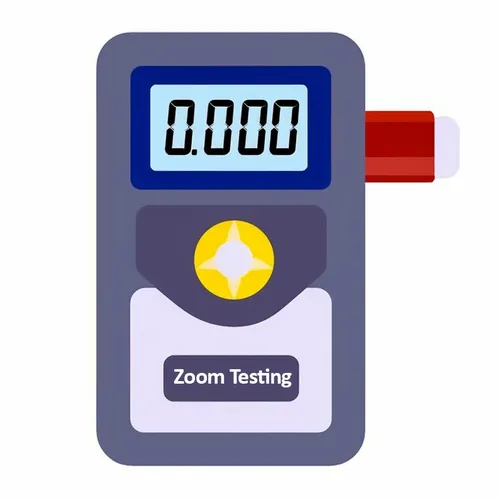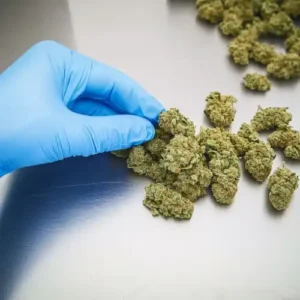Today’s digital breathalysers are calibrated at the factory to guarantee that the sensors provide accurate readings. Eventually, alcohol and other pollutants in the environment affect the settings and ultimately reduce the accuracy of the readings.
Breathalysers that have sensors that are fixed need to be returned to a service centre to get re-calibrated. Breathalysers that have sensors that are replaceable, like the AL6000 breathalyser, are automatically reset to the original factory settings when the sensor module is replaced.
How does a Breathalyser Work?
In order to understand why it is important to regularly change the sensor in your breathalyser, it is worth knowing how a breathalyser works.
As soon as you have a drink, alcohol is digested and begins to enter the bloodstream via the stomach wall. In general terms, neat alcohol drunk on an empty stomach will enter the bloodstream quicker than a less potent drink (for example, a milk based cocktail) drunk on a full stomach. This does not mean that drinking a neat spirit will make you drunker, it just means that effect is probably going to be felt much quicker.
Once alcohol is in your blood it moves around your body, producing all the usual physical brain and body effects that you feel when you have had a drink. The liver’s job at this stage is to slowly filter the alcohol out of your bloodstream. With each “pass” more alcohol is filtered out until eventually no alcohol remains in the body.
As well as the liver, alcohol also enters the lungs. When you breathe, some of the alcohol in your blood moves into the air in your lungs. This alcohol in deep lung air is what is measured when you take a breathalyser test.
Whenever a breathalyser test is to be taken, it is important that the person being tested has not drunk with the last quarter of an hour. If they have, any alcohol left in their mouth would be blown into the breathalyser. This alcohol will be at a higher concentration than that in blood and would give a false reading.
As you can see from this explanation, a breathalyser works on detecting alcohol concentrations that are very low. This is why uses should not smoke or drink prior to taking a breathalyser test. This is also the reason why the breathalyser sensor should be changed on a regular basis, in order to ensure a correct blood alcohol result.
For what length of time will the breathalyser sensing unit retain its accuracy and reliability?
When the sensor is used normally, around 250-300 tests, it will retain its accuracy for a minimum of 12 months.
The sensor will lose its accuracy depending on the following factors:
- Subjection to intense temperature (glove box in hot months)
- Exposure to severe cold (glove box in winter time)
- Contact with excessive amounts of alcohol in breathing samples
- Not ventilating the sensor following use with moisture build-up (oxidation)
- Subjection to tar in samples of those who smoke
If it is vital to have readings that are accurate, replace the sensor after around 200 tests or 6 months.
What tests can I perform to ensure that the breathalyser sensor is providing accurate readings?
Not sure of the age of your sensor or if it was stored properly? Do a series of 3 tests with a positive breath sample within a 5 minute time period. If a good sampling technique varies by more than +/- 10%, it is time for the sensor to be changed.
Replacement AL6000 Sensor
We can now offer a replacement sensor for our popular AL6000 Breathalyser. These sensors are calibrated in mg/l. Te replace an existing unit, please ensure that you have a unit with a RED circuit board and a BLUE coloured circle on the sensor. Breathalyser units that have a GREEN circuit board, or a coloured circle that is not blue, cannot be replaced with our sensor.
Replacement AL7000 Sensor
If you are looking to replace the sensor in anAL7000 breathalyser, we can also help. The AL7000 uses a unique sensor called PRISM (Pre-calibrated Replaceable Intelligent Sensor Module) that can be changed by the user. We recommend that this be done every 6 months, or every 200 tests to ensure accurate operation of the breathalyser.
When to Replace the Sensor in your Breathalyser
The sensor in your breathalyser is a delicate instrument that can lose accuracy over time. While most sensors will retain accuracy for 6-12 months with normal use, there are some signs that indicate it may be time to replace your sensor sooner:
- Inconsistent results when testing the same breath sample multiple times. If you perform three tests on the same breath sample within 5 minutes and the results vary by more than +/- 10%, the sensor may be losing accuracy.
- Error messages or odd results. If your breathalyser is frequently showing error codes or unusual results, it could mean the sensor is no longer calibrated properly.
- Changes in storage or operating conditions. Exposing the breathalyser to extreme hot or cold temperatures, high humidity, or contaminants like smoke or cleaning products can affect sensor accuracy.
- Heavy usage. Breathalyser sensors gradually lose sensitivity with extensive use over time. Replace after ~200 tests or 6 months of regular use.
- Old stock or uncertain history. If you do not know the age or usage history of the sensor, err on the side of caution and replace it. An old sensor of uncertain quality puts test accuracy at risk.
Replacing the sensor module restores your breathalyser to like-new accuracy and reliability. Our replacement sensors for the AL6000 and AL7000 are factory calibrated to guarantee precision BAC measurements.
While breathalyser sensors are designed to maintain accuracy for months of normal use, excessive exposure to extreme conditions or contaminants can accelerate deterioration. Adhering to proper care and storage procedures helps extend sensor lifespan:
- Allow the sensor to air dry fully before storage to avoid moisture damage.
- Keep breathalyser away from extreme temperatures as much as possible. Avoid leaving it in a hot car.
- Store breathalyser in a clean, dry location away from chemical fumes or smoke.
- Do not submerge sensor in liquids or allow direct contact with cleaning agents.
- Follow all usage instructions carefully to avoid damage during testing.
With proper care between replacements, a quality breathalyser sensor will deliver reliable blood alcohol readings for workplace testing or personal monitoring. Replacing your sensor on schedule is the best way to guarantee accuracy and consistent performance over the long term.
Photo by Anthony Cunningham for Zoom Testing
Zoom Testing is a leading UK drug testing company and a supplier of Drug Test Kits.





